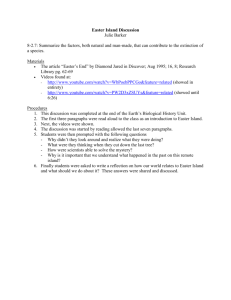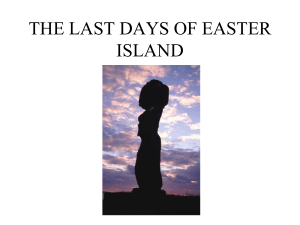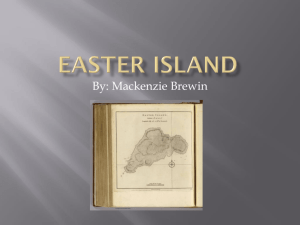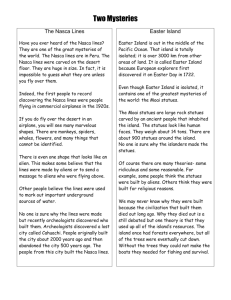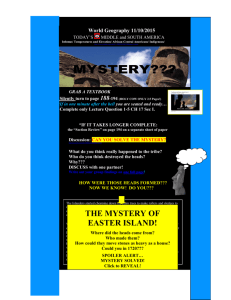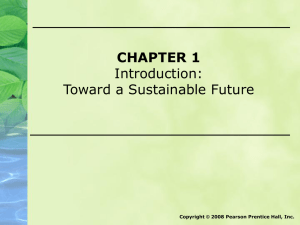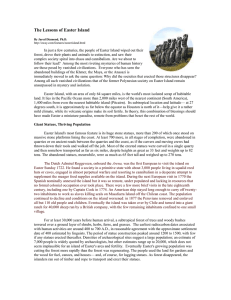Inside Reading Answer Key
advertisement
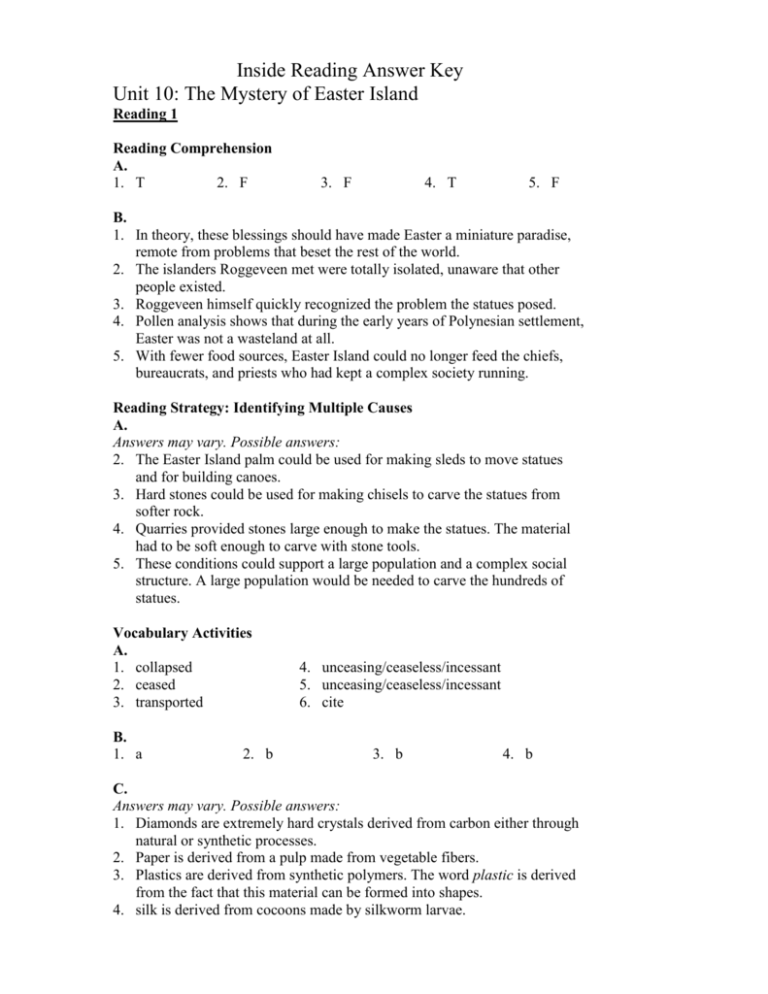
Inside Reading Answer Key Unit 10: The Mystery of Easter Island Reading 1 Reading Comprehension A. 1. T 2. F 3. F 4. T 5. F B. 1. In theory, these blessings should have made Easter a miniature paradise, remote from problems that beset the rest of the world. 2. The islanders Roggeveen met were totally isolated, unaware that other people existed. 3. Roggeveen himself quickly recognized the problem the statues posed. 4. Pollen analysis shows that during the early years of Polynesian settlement, Easter was not a wasteland at all. 5. With fewer food sources, Easter Island could no longer feed the chiefs, bureaucrats, and priests who had kept a complex society running. Reading Strategy: Identifying Multiple Causes A. Answers may vary. Possible answers: 2. The Easter Island palm could be used for making sleds to move statues and for building canoes. 3. Hard stones could be used for making chisels to carve the statues from softer rock. 4. Quarries provided stones large enough to make the statues. The material had to be soft enough to carve with stone tools. 5. These conditions could support a large population and a complex social structure. A large population would be needed to carve the hundreds of statues. Vocabulary Activities A. 1. collapsed 2. ceased 3. transported B. 1. a 2. b 4. unceasing/ceaseless/incessant 5. unceasing/ceaseless/incessant 6. cite 3. b 4. b C. Answers may vary. Possible answers: 1. Diamonds are extremely hard crystals derived from carbon either through natural or synthetic processes. 2. Paper is derived from a pulp made from vegetable fibers. 3. Plastics are derived from synthetic polymers. The word plastic is derived from the fact that this material can be formed into shapes. 4. silk is derived from cocoons made by silkworm larvae. 5. Cocoa is derived from seeds of the cacao tree. 6. The word salary is derived from the Latin word for salt. Reading 2 Reading Comprehension A. 1. T 2. F B. 1. Around 1200. 2. Later. 3. By about 1500. 3. F 4. T 5. T 4. There is general agreement on the date. 5. In 1805. 6. No. Reading Strategy: Synthesizing Information from Several Sources A. Diamond Hunt & Lipo Polynesian colonists began to arrive on √ Easter Island around the year A.D. 1200. Forests were destroyed to support agriculture. The destruction of fests played a major √ role in the population’s decline. Rats contributed to deforestation. The island’s population peaked at √ somewhere between 7,000 and 20,000. The statutes could have been constructed √ by smaller tribal groups. The island is littered with around 700 statues that were never completed or erected. Destructive civil wars broke out on the √ island that left the culture in a weakened state. The most severe decline in the island’s √ population occurred as a result of disease and forced migration caused by contact with outside societies of Europe and Latin America. The island was functioning smoothly √ when Europeans first arrived. Both √ √ √ B. Answers may vary. Possible answers: The history of Easter Island remains mysterious, but scholars agree on several points. All agree that massive deforestation occurred and that both rats and agriculture contributed to the loss of forests. They also agree that statue construction ceased before the Europeans arrived and around 700 statues were never completed or erected. All agree that by the 1860s the once substantial population had declined greatly. Vocabulary Activities A. 1. b 2. a B. 1. validity 2. confirmed 3. a 4. a 3. confirmation 4. denied 5. b 6. b 5. concepts 6. widespread 7. cited C. Answers may vary. Possible answers: 2. He doubts the validity of the anthropologist’s claim. 3. The papers quoted several authorities who confirmed the claim. 4. The researchers made an incessant effort to validate their theory. 5. They deny the role of speculation in the stock market’s collapse. 6. The critics made some valid complaints. Nevertheless, this concept is widely accepted. 7. The fact that they ceased transporting the statues is evidence that the culture collapsed.

